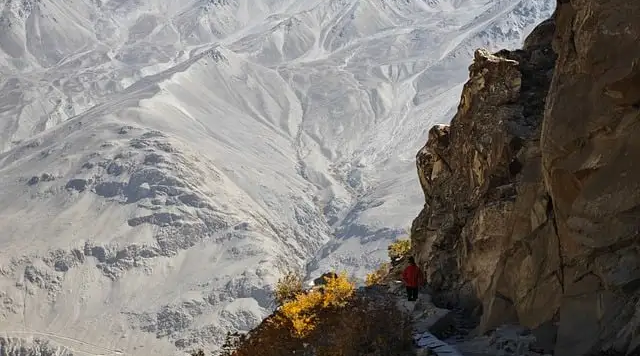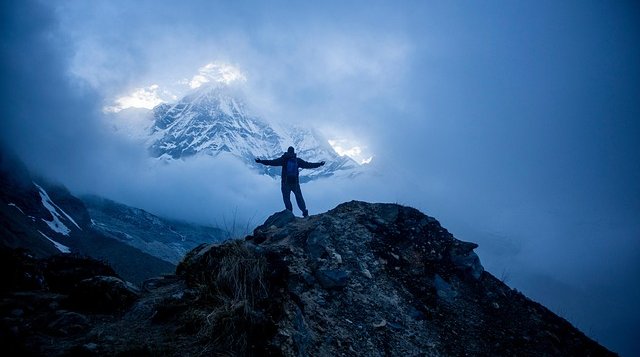Are you planning your first mountain adventure but confused about whether to go hiking or trekking? You're not alone! Many adventure enthusiasts use these terms interchangeably, but there are significant differences that can make or break your outdoor experience. Understanding these differences is crucial, especially when planning an adventure in the majestic Himalayas of Nepal.
In this comprehensive guide, we'll break down everything you need to know about hiking vs trekking, helping you choose the perfect adventure for your skill level and goals.
What is Hiking? A Beginner's Introduction to Day Adventures
Hiking is essentially walking on trails or paths in natural environments, typically completed within a single day. Think of it as an extended nature walk that takes you through forests, hills, or mountain paths. Most hiking adventures last anywhere from a few hours to a full day, and you'll return to your starting point or a nearby accommodation by evening.
Key Characteristics of Hiking:
- Duration: Usually 1-8 hours in a single day
- Distance: Typically 3-15 miles (5-25 kilometers)
- Terrain: Well-marked trails, established paths
- Equipment: Basic gear like day pack, water, snacks
- Accommodation: Return home or to nearby hotels same day
Popular hiking destinations in Nepal include short trails around Kathmandu Valley, Nagarkot sunrise hikes, and day trips to Shivapuri National Park. These adventures are perfect for beginners who want to experience nature without the commitment of multi-day expeditions.
What is Trekking? Understanding Multi-Day Mountain Adventures
Trekking, on the other hand, is a multi-day journey through mountainous or remote terrain, often involving camping or staying in basic mountain lodges. It's a more immersive experience that takes you deep into wilderness areas, requiring careful planning, proper gear, and physical endurance.
Key Characteristics of Trekking:
- Duration: Multiple days to several weeks
- Distance: Can range from 50-300+ miles total
- Terrain: Remote paths, challenging mountain routes
- Equipment: Complete camping gear or lodge accommodation
- Accommodation: Mountain lodges, camping, or basic shelters
Nepal's famous trekking routes like Everest Base Camp Trek, Annapurna Circuit Trek, and Langtang Valley Trek exemplify this adventure style, taking trekkers through diverse landscapes over 10-20 days.
The 7 Major Differences Between Hiking and Trekking
1. Time Commitment and Duration
The most obvious difference lies in time investment. Hiking is your weekend warrior activity – you can complete most hikes in a single day and sleep in your own bed that night. Trekking demands a significant time commitment, often requiring vacation days and careful schedule planning.
Hiking Duration Examples:
- Sunrise hikes: 3-4 hours
- Nature trail walks: 2-6 hours
- Day mountain hikes: 6-8 hours
Trekking Duration Examples:
- Short treks: 3-7 days
- Classic treks: 10-16 days
- Expedition treks: 20+ days
2. Physical Fitness Requirements
While both activities require basic fitness, trekking demands significantly higher endurance levels. Hiking tests your fitness for a single day, while trekking challenges your body's ability to perform consistently over multiple days.
Hiking Fitness Needs:
- Basic cardiovascular health
- Ability to walk for several hours
- Moderate leg strength
Trekking Fitness Requirements:
- High cardiovascular endurance
- Strong leg and core muscles
- Mental resilience for multi-day challenges
- Altitude adaptation capabilities (for high-altitude treks)
3. Gear and Equipment Essentials
The equipment difference between hiking and trekking is substantial, both in quantity and cost.
Essential Hiking Gear:
- Comfortable hiking boots
- Day pack (20-30 liters)
- Water bottles and snacks
- Basic first aid kit
- Weather-appropriate clothing
- Navigation tools (map, GPS)
Essential Trekking Equipment:
- Trekking boots and multiple pairs of socks
- Large backpack (50-70 liters) or porter service
- Sleeping bag rated for mountain temperatures
- Multiple clothing layers for varying climates
- Comprehensive first aid and emergency supplies
- Trekking poles for stability
- Headlamp and backup lighting
4. Cost and Budget Considerations
Budget planning differs dramatically between these two adventure types.
Typical Hiking Costs:
- Transportation to trailhead: $10-50
- Food and drinks: $15-30
- Gear (if purchasing): $200-500 initially
- Total day cost: $25-80
Typical Trekking Investment:
- Professional guide and porter: $25-40 per day
- Accommodation: $10-30 per night
- Permits and fees: $30-100
- Complete gear set: $800-2000
- Total trek cost: $800-3000+ depending on duration
5. Terrain and Trail Difficulty
Trail complexity varies significantly between hiking and trekking adventures.
Hiking Terrain Features:
- Well-maintained and marked trails
- Clear signage and route indicators
- Regular rest points and facilities
- Lower altitude variations
- Day-use facilities often available
Trekking Terrain Challenges:
- Remote and sometimes unmarked paths
- River crossings and challenging obstacles
- Significant altitude changes
- Weather-dependent route conditions
- Limited or no rescue access
6. Safety and Risk Management
Risk levels and safety considerations scale up considerably with trekking.
Hiking Safety Concerns:
- Weather changes during day trip
- Minor injuries like sprains or cuts
- Getting lost on familiar trails
- Dehydration or fatigue
Trekking Safety Challenges:
- Altitude sickness and mountain emergencies
- Multi-day weather exposure
- Remote location medical emergencies
- Equipment failure consequences
- Navigation in challenging terrain
7. Cultural and Environmental Immersion
The depth of experience differs substantially between these activities.
Hiking Cultural Experience:
- Brief interaction with local communities
- Limited cultural immersion time
- Focus primarily on natural scenery
- Quick glimpses of local lifestyle
Trekking Cultural Immersion:
- Extended stays in remote villages
- Deep interaction with mountain communities
- Understanding local customs and traditions
- Supporting local economy through extended stays
Nepal Himalayan Adventures: Which Option Suits You Best?
Choose Hiking If You:
- Have limited vacation time
- Are new to mountain adventures
- Want to test your fitness level gradually
- Prefer sleeping in comfortable accommodations
- Have budget constraints
- Want regular weekend outdoor activities
Recommended Nepal Hiking Options:
Choose Trekking If You:
- Can commit 1-3 weeks for adventure
- Seek transformative travel experiences
- Have good physical fitness and endurance
- Want to challenge yourself mentally and physically
- Desire deep cultural immersion
- Are comfortable with basic mountain accommodations
Recommended Nepal Trekking Adventures:
- Everest Base Camp Trek (14 days)
- Annapurna Base Camp Trek (12 days)
- Langtang Valley Trek (9 days)
- Manaslu Circuit Trek (15 days)
Essential Preparation Tips for Both Activities
Pre-Adventure Fitness Training
Regardless of your choice, physical preparation is crucial for enjoying your mountain adventure.
For Hiking Preparation:
- Start with 30-minute daily walks
- Gradually increase to 2-3 hour walks
- Include hill walking in your training
- Focus on leg strength exercises
For Trekking Preparation:
- Begin training 2-3 months in advance
- Build up to 6-8 hour walking days
- Include weighted backpack training
- Add cardiovascular and strength training
- Practice with your actual trekking gear
Mental Preparation Strategies
Mountain adventures test mental resilience as much as physical strength.
Mental Preparation Tips:
- Research your chosen route thoroughly
- Understand potential challenges and solutions
- Practice positive self-talk techniques
- Prepare for weather and comfort variations
- Set realistic expectations for your adventure
Seasonal Considerations for Nepal Adventures
Best Hiking Seasons:
- Autumn (September-November): Clear skies, stable weather
- Spring (March-May): Moderate temperatures, blooming flowers
- Winter (December-February): Lower altitude hikes only
- Monsoon (June-August): Limited options due to rain
Optimal Trekking Seasons:
- Peak Season (October-November): Best weather, clear mountain views
- Spring Season (March-May): Good conditions, rhododendron blooms
- Off-Season Considerations: Lower costs but challenging weather
Budget Planning and Cost Breakdown
Hiking Budget Essentials:
Understanding costs helps plan better adventures without financial surprises.
One-Day Hiking Costs:
- Local transportation: $5-15
- Trail permits (if required): $5-10
- Food and beverages: $10-20
- Emergency fund: $20-30
- Total: $40-75 per day
Trekking Investment Planning:
Trekking requires more substantial financial planning and preparation.
Multi-Day Trekking Costs:
- Guide services: $25-35 per day
- Porter services: $15-25 per day
- Accommodation: $8-25 per night
- Meals: $15-30 per day
- Permits and fees: $30-100 total
- Total: $800-2500+ depending on trek length
Safety Guidelines and Emergency Preparedness
Hiking Safety Essentials:
- Inform someone about your hiking plans
- Carry emergency contact information
- Understand basic first aid procedures
- Know when to turn back due to weather
- Carry extra water and emergency snacks
Trekking Safety Protocols:
- Always trek with experienced guides in Nepal
- Understand altitude sickness symptoms and prevention
- Carry comprehensive emergency communication devices
- Know evacuation procedures for your route
- Maintain detailed itinerary with emergency contacts
Environmental Responsibility and Sustainable Tourism
Both hiking and trekking in Nepal require environmental consciousness and respect for local communities.
Leave No Trace Principles:
- Pack out all trash and waste
- Stay on designated trails
- Respect wildlife and vegetation
- Support local communities responsibly
- Minimize campfire impact
Supporting Local Communities:
- Choose local guides and porter services
- Purchase supplies from mountain communities
- Respect cultural traditions and customs
- Contribute to sustainable tourism practices
Making Your Final Decision: Hiking or Trekking?
The choice between hiking and trekking ultimately depends on your personal goals, available time, fitness level, and budget. Both offer incredible opportunities to experience Nepal's natural beauty and mountain culture.
Start with hiking if you're:
- New to mountain adventures
- Testing your interest in outdoor activities
- Working with time or budget constraints
- Building fitness for future trekking goals
Choose trekking if you want:
- Life-changing adventure experiences
- Deep cultural immersion opportunities
- Significant personal challenges and growth
- Comprehensive Himalayan exploration
Frequently Asked Questions
Q: Can I go directly to trekking without hiking experience? A: While possible, starting with day hikes helps you understand your fitness level and gear preferences before committing to multi-day adventures.
Q: What's the minimum fitness level required for Nepal trekking? A: You should be able to walk continuously for 6-8 hours and climb stairs without significant difficulty. Most treks require moderate to good fitness levels.
Q: Is it safe to trek alone in Nepal? A: Solo trekking is not recommended, especially for beginners. Hiring experienced local guides enhances safety and cultural understanding.
Q: How much should I budget for a first-time Nepal trek? A: Budget $800-1500 for a 10-14 day guided trek, including permits, guide, accommodation, and meals, excluding international flights and gear.
Q: When is the best time for beginners to start trekking in Nepal? A: October-November offers the most stable weather and clear mountain views, making it ideal for first-time trekkers.
Conclusion: Your Adventure Awaits
Whether you choose hiking or trekking, Nepal's Himalayas offer unforgettable experiences that will connect you with nature, challenge your limits, and create lasting memories. Start with honest self-assessment of your goals, fitness, and available resources.
Remember, every expert trekker started with their first day hike. The mountains will always be there, waiting for when you're ready to take the next step in your adventure journey.
Ready to begin your Himalayan adventure? Contact our experienced team at Himalayan Adventures Nepal to plan your perfect hiking or trekking experience tailored to your goals and abilities.
Ready to explore the majestic Himalayas? Our expert guides at Himalayan Adventures Nepal have over 15 years of experience creating safe, memorable mountain adventures. Contact us today to start planning your perfect hiking or trekking experience in Nepal.








